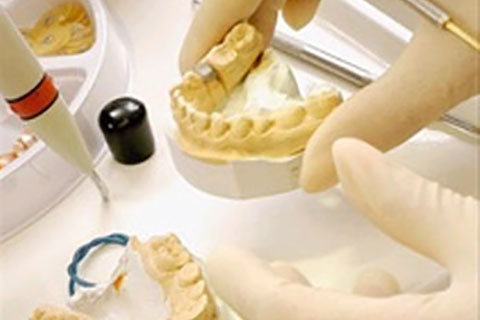-
Press Articles – Practise Contents Insurance
22/08/2017In the first of three articles looking at the main types of insurance that practitioners should seek, Lesley Owen and Martin Bell look at practice contents insurance and employer liability for opticians.
Optical practices that do not stock designer frames and sunglasses are an increasingly rare breed. The value of these goods sets opticians apart from their counterparts in dental or general practice, with highly desirable, clearly displayed products representing a significant additional hazard. This has led to an increasing number of practices suffering uninvited visits from the criminal fraternity.
Thieves go to elaborate lengths to steal what are highly portable, high value items and which, certainly in the case of sunglasses, can be readily re-sold. The average cost of a break-in approaches £10,000. This high cost is due in part to the loss of stock but is added to by the repair costs to the premises and the display units arising from the theft.
Experienced criminals know that even with the protection of a ‘Red Care’ alarm system, which communicates directly to a security company’s central station, a typical police response time is likely to be more than long enough for the thief to gain entry, remove target stock and cause considerable damage in the process. The intruder will always seek to identify a weak point in the security – a poorly protected side window or door, for example. With good physical security such as bars, shutters and metal skin doors, a thief may be deterred and move on to an easier target.
In the major cities we have been shocked by the audacity of some thieves, including those who break in through a shop front, despite it being early evening on one of the city’s busiest roads. Preventing entry is therefore the key. How often do we hear bells ringing and assume it to be a false alarm or that somebody else will have already notified the police?
Extent of Cover
Many insurers do not distinguish between practices that do and do not supply, designer eyewear, and set a single standard of security for the profession.The term ‘practice contents’ insurance is a bit of a misnomer since the cover provided by insurance companies is significantly wider than simply contents. In addition, policies usually cover any lost revenue and profit incurred.
Consider a burst pipe in a flat above a practice outlet which affects the consulting room equipment and as a result sight tests cannot be carried out until the equipment is repaired or replaced. This may take several weeks and consequently the practice loses business.
It is strongly recommended that your cover is extended to include the loss of vouchers for sight test fees and so on. A practice may send batches of vouchers for payment and loss in transit may mean lost revenue of several thousand pounds. A loss of this nature is not automatically covered in standard policies. You should consider asking your existing insurer to clarify the extent of cover and extend it if necessary.
Practice contents policies usually also provide employer and public/product liability cover. The former is compulsory in the UK and the latter strongly recommended. This cover will meet the legal costs of investigating and defending allegations arising from injury to staff or members of the public in the workplace and any resulting offer of compensation.
Cover applies to all employees whether they are full or part-time, including potential liability for injury to a locum while on the premises. An employer has a legal duty to provide a safe place and system of work, to assess the hazards associated with working practices and to implement alternative working practices or protection as necessary.
It will come as no surprise to learn that the ‘no win, no fee’ litigation culture which has developed over recent years is fuelling disputes of all types. Practices that may have traded for many years without incident are now finding themselves the recipient of legal correspondence for the very first time. Similar risks exist for doctors and dentists, but fortunately all are perceived by insurers to be classified as low risk.
All companies in the chain of supply have a potential liability arising from injury or damage caused by products supplied. In the majority of cases the action can be passed back to the manufacturer but not in all. Practices which incorporate a laboratory should have product liability cover as a manufacturer as well as a retailer.
The practice contents policy will not protect against malpractice and specialist cover should be arranged to cover the ‘treatment risk’. This will be considered in a separate article.
Domiciliary care work in hospitals and nursing homes brings with it the need to extend cover to equipment such as the tonometer and the ophthalmoscope anywhere in the UK. Look carefully at the small print of your policy for restrictive conditions.
Data Protection
Last, but by no means least, is cover for the reinstatement costs of data following loss or damage. Having helped a number of clients through the painful experience of managing their business following loss of data, the authors can testify to the paramount need to reinstate records quickly.Back-up disks should be removed from the premises to avoid the need to manually piece together and reinstate information. Loss of data can arise due to fire, theft, accidental erasure and in a variety of other ways.
The business interruption section of the policy provides much of the cover but not the costs of reproducing and reinstating data due to accidental or malicious erasure. Specialist cover is available. Consider your own procedures to identify if cover is needed.
In many ways the optometry practice represents a very similar risk profile to a dentist’s or doctor’s practice. However, when designer frames and sunglasses are stocked the profile is altered significantly and the potential for loss or damage greatly increased.
Lesley Owen and Martin Bell are brokers for UK Special Risks.
Specialist Insurance
-
Dental Laboratories
 Read More
Start quote now
Read More
Start quote now
-
Health Food Shops
 Read More
Start quote now
Read More
Start quote now
-
Garden Designers
 Read More
Start quote now
Read More
Start quote now






